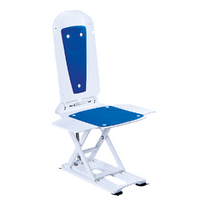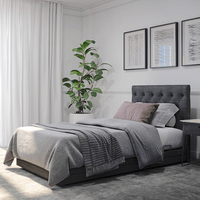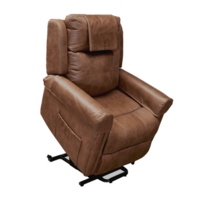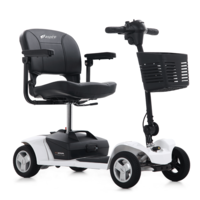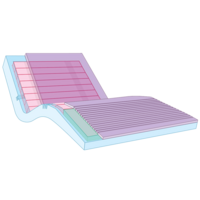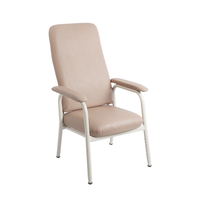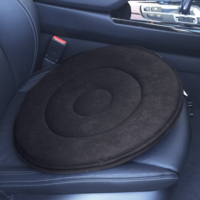Back Pain: Tips for Prevention and Pain Management
Back pain is incredibly common, with around 1 in 6 Australians reporting some kind of back problem over a one year period. And almost 40% of people with back pain said it at least “moderately” affected their daily activities (ABS 2017-18 National Health Survey).
As well as affecting daily activities, back pain can also impact mood and sleep. People with chronic back pain are more likely to report a lower quality of life. And back problems can lead to other health concerns.
Knowing how to care for your back, through both prevention and pain management, can help to improve your health and wellbeing.
Why does my back hurt?
Your back is a complex structure made up of a network of muscles, ligaments and bones. It supports your head, shoulders, ribcage, pelvis and legs. And it’s capable of a lot of movement, twisting and bending, side to side, forward and back. Because of this, it’s susceptible to all kinds of strain and injury.
Back pain can be caused by:
- Muscle or ligament strain through repetitive movements such as lifting, bending or twisting
- Injury such as those caused by a slip, fall or trip
- Inflammatory disease like osteoarthritis or rheumatoid arthritis
- Sciatica from a pinched nerve in the lower back
- Bulging or ruptured discs putting pressure on a nerve
More frustratingly, sometimes back pain can’t be attributed to any particular cause at all.
What to do for back pain?
Because back pain can be due to a myriad of factors, it can be difficult to determine exactly what is causing pain and how to stop it.
Movement and gentle exercise
You might not feel like moving if you’re in pain. But lack of movement can cause the back muscles to weaken further. Try to maintain a moderate level of exercise. A brisk walk, swimming or yoga class are good options.
Strengthening exercises
Aim for a mix of exercises that target your back muscles as well as adjacent muscles in your shoulders and legs. A physiotherapist or personal trainer can help put together a program to target these areas and gradually increase your activity level.
Lifestyle changes
Look at what positive changes you can make to your overall health. Excess weight puts strain on your back muscles. Smoking is linked to degenerative disk disease and other spinal problems. A sedentary lifestyle can cause your back to weaken over time.
Massage and alternative treatments
Mild back problems can sometimes be improved through massage and other treatments. Remedial massage helps to relieve tight muscles, increase movement and improve blood circulation. Acupuncture has also been shown to be effective in providing relief to people with chronic back pain.
Anti-inflammatory medication
Over the counter medication such as tablets and cream can help with certain types of back pain. On a short term basis, they can help to relieve pain so you can carry out movement and gentle exercise. Just pay attention to the recommended dosage and be aware of any contraindications.
Get professional help
Just because back pain is common doesn’t mean it’s something you have to ‘put up with’. Speak with a medical professional:
- if you’re experiencing long-term back pain that doesn’t seem to go away with other treatment;
- if your back pain comes on suddenly;
- if it’s a sharp pain as opposed to a dull ache; or,
- if it severely impacts your everyday activities.
Caring for your back
Because your back plays such a vital role in your musculoskeletal system, it’s important to take care of it.
The best way to keep your back healthy is to make sure you’re getting plenty of movement. A daily walk, regular stretching, gentle movement and targeted back strengthening exercises can help keep your back working for you.
Maintain good posture when sitting or standing. Make sure your office chair provides support for your back, your computer is set at the right height and everything you need regularly is at arm’s reach. If you must stand for long periods, use a footstool or ledge to take the weight off your lower back, switching sides periodically.
Whenever you have to lift anything, use proper techniques to avoid straining your back. Bend at the knees, keep the load close to your body and avoid twisting your body when you move.
If your job involves regular lifting, bending, twisting, pulling or pushing, consider what supports you could use to remove the strain on your back. Lift with a partner, or use a mechanical lift to take the majority of the weight.
Back care products
There are products available to prevent back strain or injury occurring, or prevent further pain or discomfort. These might be used on a temporary basis while you recover from back problems, or over the long-term alongside other back care strategies.
What is the best mattress for back pain?
Let’s start with the basics. A supportive mattress is one of the best things you can do to prevent back problems and reduce back pain.
However, there isn’t one best type of mattress for back pain. While firm mattresses are frequently recommended, they may not be the best option for everyone.
Zoned spring mattresses can offer more support at common friction points such as the head, hips and legs, while fully foam mattresses can provide support directly where you need it. Ultimately, the best mattress is one that feels comfortable for you and gives you a good night’s sleep.
Lift and recline chair
Lift recline chairs are a popular choice for people with back problems. With their high back, cushioning support and wide arm rests, they provide much more support than a standard armchair. The leg lift and lay back option helps to take weight off your back, while improving blood flow.
An added benefit is the sit-to-stand function that supports you as you exit the chair, minimising any strain on the lower back muscles.
Read our guide to learn more about the features and benefits of lift and recline chairs.
High back day chair
Maintaining good posture improves core strength and supports the back. A high back chair assists in sitting in an upright position where your back and head are fully supported. Adjustable legs ensure that feet are planted flat on the floor with the knees at a 90 degree angle.
Swivel cushion
A swivel cushion minimises twisting movements that can exacerbate back pain. Used in the car, they allow you to easily enter and exit the vehicle by swivelling your body into place. But they can also be used to minimise any type of twisting movement while seated in a standard chair or stool.
Bathroom aids
Back pain can make bathing difficult, especially when trying to clean those hard-to-reach areas that involve reaching or twisting. Bathroom aids, such as back sponges, can help you keep clean without further straining your back.
Browse our range of back care products designed to improve back health, minimise stain and aid pain management.

















